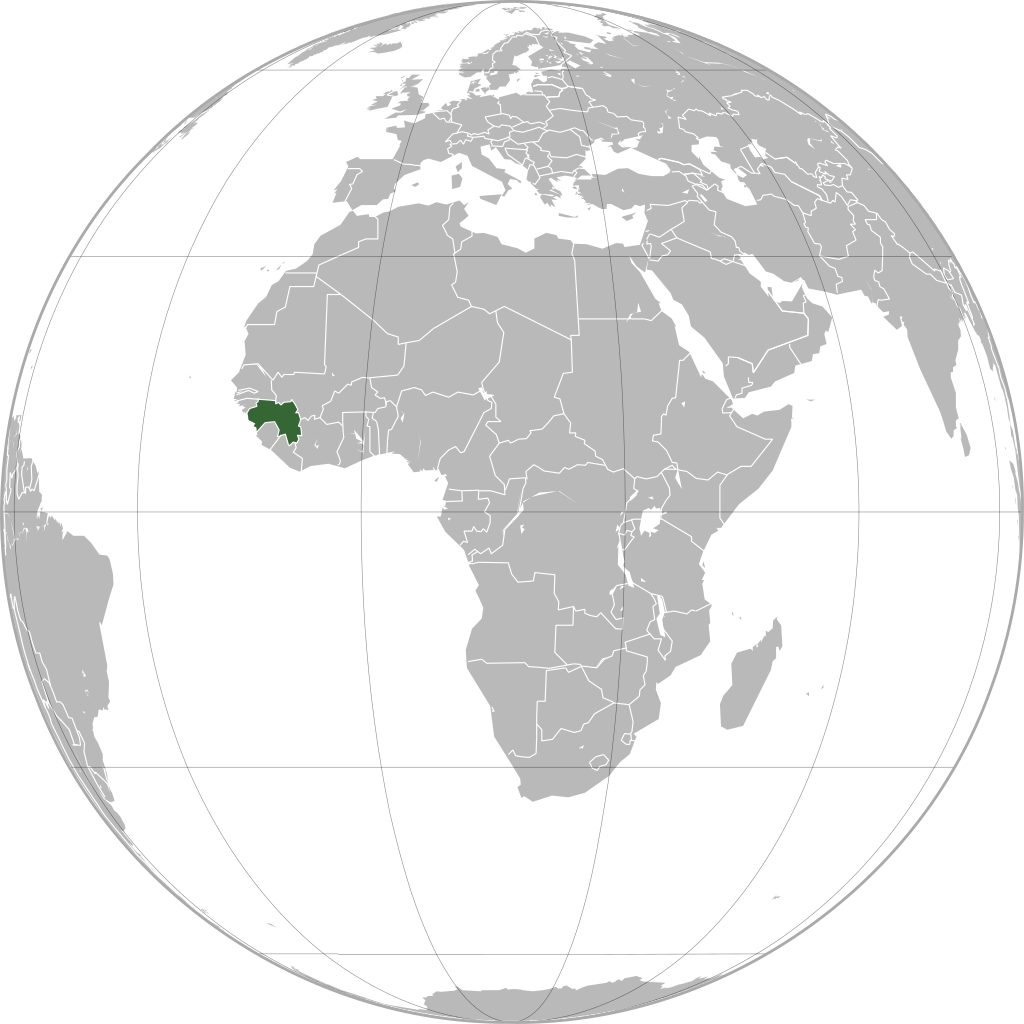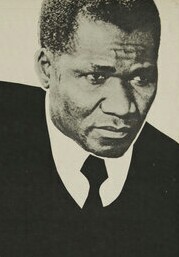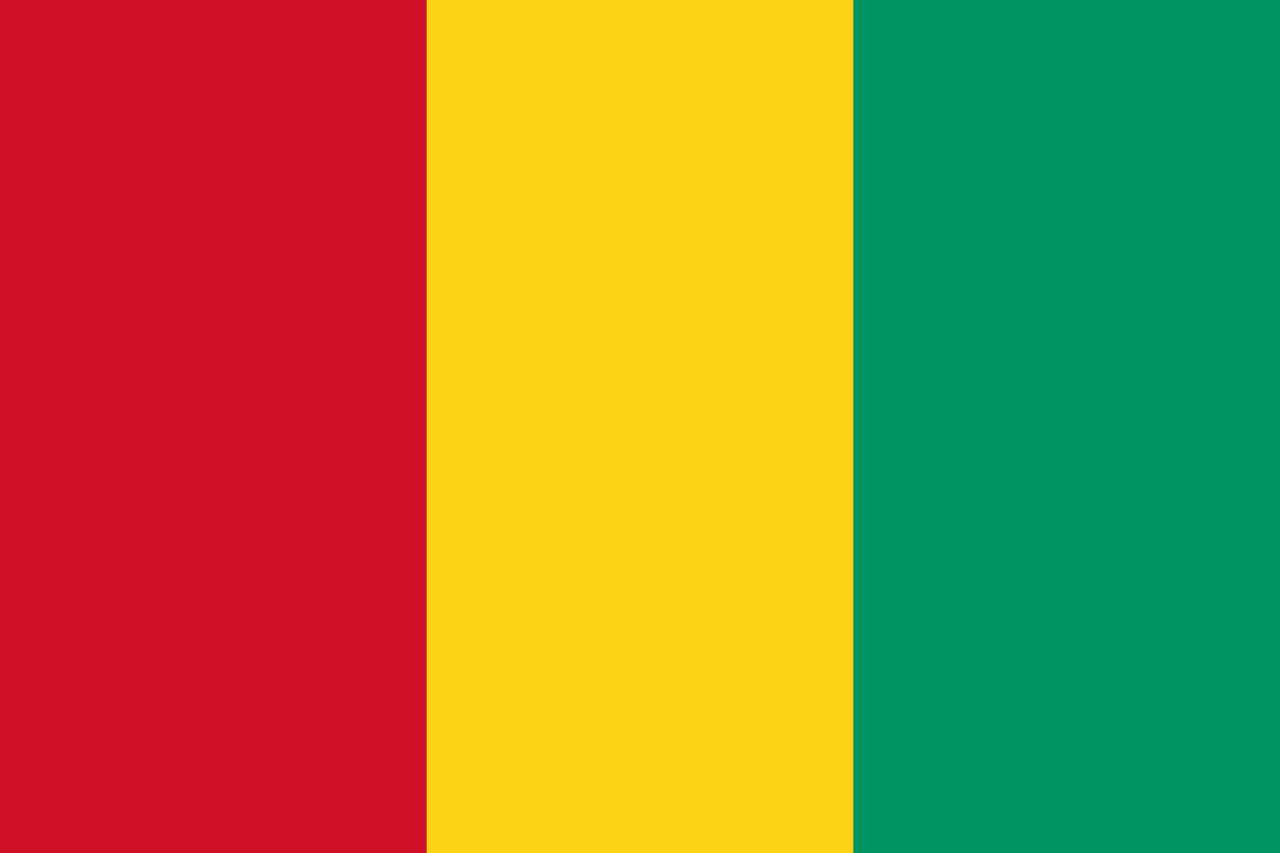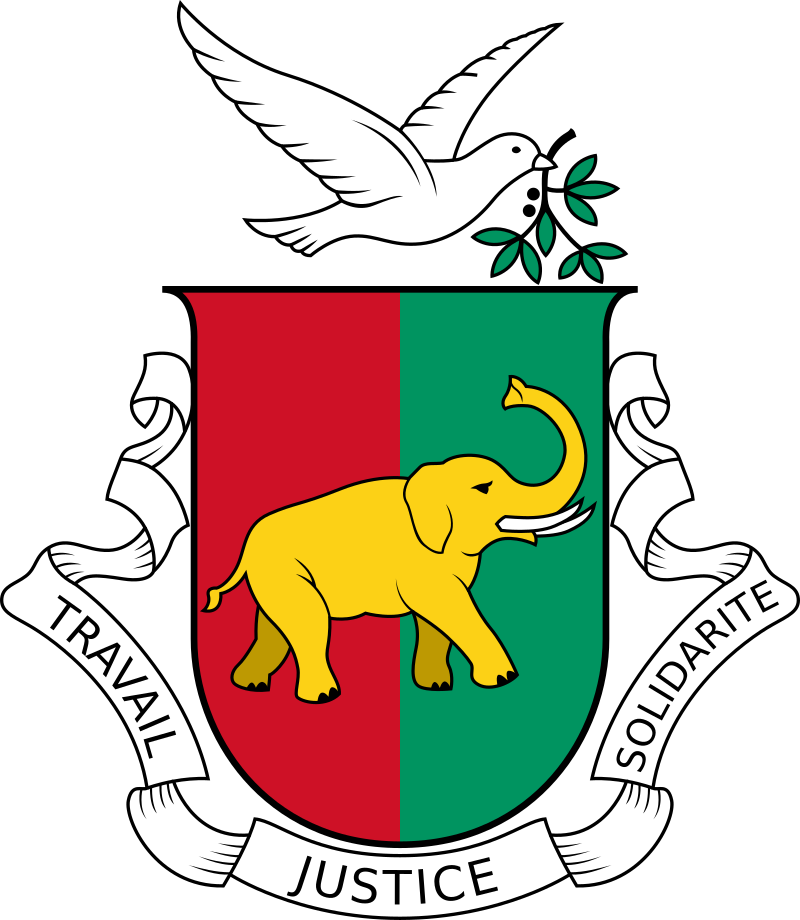People's Revolutionary Republic of Guinea (1958–1984): Difference between revisions
More languages
More actions
(Expanded on the government structure of Guinea.) Tag: Visual edit: Switched |
(Completed the government section of People's Guinea) Tag: Visual edit |
||
| Line 11: | Line 11: | ||
| population_estimate = 5,470,716 | | population_estimate = 5,470,716 | ||
| population_estimate_year = 1985 | | population_estimate_year = 1985 | ||
|currency=1959 -1971:<br>[[Guinean Franc]]<br>1971-1985:<br>[[Guinean Syli]] | |currency=1959 -1971:<br>[[Guinean Franc]]<br>1971-1985:<br>[[Guinean Syli]]| leader_title1 = President and Secretary General of the PDG-RDA | ||
| leader_name1 = [[Sékou Touré]] | | leader_name1 = [[Sékou Touré]] | ||
| leader_title2 = Prime Minister | | leader_title2 = Prime Minister | ||
| Line 21: | Line 21: | ||
== Government == | == Government == | ||
=== Concept of the | === Concept of the party state === | ||
As formulated by Ahmed Sekou Touré, the Party State is the merging of the administrative functions of society with the vanguard party; thus entrenching the revolution in all aspects of public policy and solidifying a monopoly of political power within the vanguard. | |||
=== | === Local Revolutionary Authorities === | ||
The basic committee is the Local Revolutionary Authority (PRL), whose executive is composed of the Mayor, the Deputy Mayor, the four directors of the local authorities and the chairwoman of the Special Women’s Committee. The Mayor is the chair of the PRL executive and is tasked with the organization and supervision of the the activities of local authorities. The general duties of the Mayor is the maintenance of economic and legal discipline, presenting and managing the PRL budget, and safeguarding the PDG's monopoly of political power. Among their duties of signing marriage and death certificates, they are also police officers and preside at sessions of the People's Court. In the event of the mayor's absence, the Deputy Mayor takes his/her place and assumes authority over his/her duties.<ref name=":0">[https://unesdoc.unesco.org/ark:/48223/pf0000035975 Cultural policy in the Revolutionary People's Republic of Guinea]</ref> | The basic committee is the Local Revolutionary Authority (PRL), whose executive is composed of the Mayor, the Deputy Mayor, the four directors of the local authorities and the chairwoman of the Special Women’s Committee. The Mayor is the chair of the PRL executive and is tasked with the organization and supervision of the the activities of local authorities. The general duties of the Mayor is the maintenance of economic and legal discipline, presenting and managing the PRL budget, and safeguarding the PDG's monopoly of political power. Among their duties of signing marriage and death certificates, they are also police officers and preside at sessions of the People's Court. In the event of the mayor's absence, the Deputy Mayor takes his/her place and assumes authority over his/her duties.<ref name=":0">[https://unesdoc.unesco.org/ark:/48223/pf0000035975 Cultural policy in the Revolutionary People's Republic of Guinea]</ref> | ||
| Line 30: | Line 31: | ||
Each PRL authority was chaired by a Chief Officer, who would be assisted by a technical work committee. Technical work committee members would be nominated by the chief officers of said authority and appointed by the Mayor. Technical work committees were then divided into numerous, specific, subcommittees.<ref name=":0" /> | Each PRL authority was chaired by a Chief Officer, who would be assisted by a technical work committee. Technical work committee members would be nominated by the chief officers of said authority and appointed by the Mayor. Technical work committees were then divided into numerous, specific, subcommittees.<ref name=":0" /> | ||
Ran under the association of the PRLs were the special youth and women committees, which were tasked with organizing youth and empowering women in Guinean political society. Within each local garrison contained a Military Committee (CUM), which was the basic political organization corresponding to the PRLs. This was done as a means of tightening the grip of the PDG on the Guinean Army, thus completing Sekou Touré's | Ran under the association of the PRLs were the special youth and women's committees, which were tasked with organizing youth and empowering women in Guinean political society. Within each local garrison contained a Military Committee (CUM), which was the basic political organization corresponding to the PRLs. This was done as a means of tightening the grip of the PDG on the Guinean Army, thus completing Sekou Touré's Party State.<ref name=":0" /> | ||
=== Party | === Party sections === | ||
Comprising of several PRLs, the sectional level is the second stage of organization of the PDG, and generally corresponded to an arrondissement. Each section contained a youth and women's committee, both of which were subordinate to the Executive Committee while the arrondissement workers' committees. were subordinate to both the Executive Committee and the Regional Workers' Committee. The sectional congress was the decision-making body and the sectional conference would make decisions between congresses.<ref name=":0" /> | |||
=== | === Regional Revolutionary Authorities === | ||
The Revolutionary People's Republic of Guinea was divided into 33 administrative divisions and 34 party federations. A federation was composed of a group of party sections functioning within an administrative region, of which only Conakry would contain two federations. Federations were managed by a federal executive, the members of which were elected by the congress and selected from the Chief Officers of the sectional Executive Committees and members of the outgoing federal executive. This executive has four ex officio members: the governor of the administrative region, the chairwoman of the regional women's committee, and the general secretaries of the regional committee of the Youth of the African Democratic Revolution (JRDA) and the regional workers' committee. The chief officers of party federations were known as Federation Secretaries. The decision-making bodies of the federations were the Federal Congresses, Regional Councils for the Revolution and Regional Legislative Assemblies. The functions of the Regional Revolutionary Authorities (PRR) were exercised by the PDG Federal Executives and Regional Executive Councils. Regional women's, youth, and workers' committees were integrated into the regional administrations.<ref name=":0" /> | |||
[[File:Portrait of Seku Ture.jpg|thumb|Portrait of the Supreme Leader of the Revolution, General Secretary of the Democratic Party of Guinea and President of the Revolutionary Republic of Guinea.]] | |||
=== | === National level === | ||
The Party National Congress elects the Supreme Leader of the Revolution, the General Secretary of the PDG and the members of the Central Committee. The National Political Bureau (BPN) is an executive body composed of seven members elected from the members of the Central Committee. By law, the General Secretary of the PDG is the President of Guinea. The Central Committee is the legislative arm of the Democratic Party of Guinea. The national decision-making bodies are the National Congress, the National Council of the Revolution (CNR) and the Legislative Assembly. Executive power is exercised by the President of the Republic, who is the Head of State, the Central Committee (CC) and the Government. The latter is divided into seven Domains, each of which is headed by a member of the National Political Bureau. Three kinds of integrated organizations operate at national level: the national committees of the JRDA, the national women’s committees and the national workers’ committees.<ref name=":0" /> | |||
== Administrative divisions == | == Administrative divisions == | ||
Revision as of 04:06, 3 May 2023
| People's Revolutionary Republic of Guinea | |
|---|---|
| 1958–1984 | |
Motto: Work, Justice, Solidarity | |
Anthem: Freedom | |
 | |
| Capital and largest city | Conakry |
| Official languages | French |
| Dominant mode of production | Socialism |
| Government | Unitary semi-presidential party-state |
• President and Secretary General of the PDG-RDA | Sékou Touré |
• Prime Minister | Louis Lansana Beavogui |
| Legislature | National Assembly |
| History | |
• Established | 1958 |
• Dissolution | 1984 |
| Population | |
• 1985 estimate | 5,470,716 |
| Currency | 1959 -1971: Guinean Franc 1971-1985: Guinean Syli |
The People's Revolutionary Republic of Guinea, commonly known as Guinea, was a socialist state in West Africa from 1958 to 1984 established by Sekou Touré following the rejection of the French Community during the 1958 constitutional referendum, paving the way for independence across West Africa.
History
Government
Concept of the party state
As formulated by Ahmed Sekou Touré, the Party State is the merging of the administrative functions of society with the vanguard party; thus entrenching the revolution in all aspects of public policy and solidifying a monopoly of political power within the vanguard.
Local Revolutionary Authorities
The basic committee is the Local Revolutionary Authority (PRL), whose executive is composed of the Mayor, the Deputy Mayor, the four directors of the local authorities and the chairwoman of the Special Women’s Committee. The Mayor is the chair of the PRL executive and is tasked with the organization and supervision of the the activities of local authorities. The general duties of the Mayor is the maintenance of economic and legal discipline, presenting and managing the PRL budget, and safeguarding the PDG's monopoly of political power. Among their duties of signing marriage and death certificates, they are also police officers and preside at sessions of the People's Court. In the event of the mayor's absence, the Deputy Mayor takes his/her place and assumes authority over his/her duties.[1]
The PRL executive is divided up into the authorities of administration, economy, public works and communications, and social affairs. The local administrative authorities were in charge of managing the flow of information and the press, carrying out the local census, maintaining and managing local archives, organizing PDG and PRL meetings, as well as keeping track of records ranging from births, deaths, marriages and judicial proceedings. The local economic authorities managed the production, marketing and fair distribution of all goods and services. Local authorities for public works and communications were tasked with the development and regulation of all postal services and telecommunications. Last are the local authorities for social affairs, which were responsible for the Revolutionary Education Centers (CER) of the PRL, literacy training, scientific experimentation, social assistance, funeral services, maintaining cemeteries, as well as organizing and supervising events surrounding sports, culture and art.[1]
Each PRL authority was chaired by a Chief Officer, who would be assisted by a technical work committee. Technical work committee members would be nominated by the chief officers of said authority and appointed by the Mayor. Technical work committees were then divided into numerous, specific, subcommittees.[1]
Ran under the association of the PRLs were the special youth and women's committees, which were tasked with organizing youth and empowering women in Guinean political society. Within each local garrison contained a Military Committee (CUM), which was the basic political organization corresponding to the PRLs. This was done as a means of tightening the grip of the PDG on the Guinean Army, thus completing Sekou Touré's Party State.[1]
Party sections
Comprising of several PRLs, the sectional level is the second stage of organization of the PDG, and generally corresponded to an arrondissement. Each section contained a youth and women's committee, both of which were subordinate to the Executive Committee while the arrondissement workers' committees. were subordinate to both the Executive Committee and the Regional Workers' Committee. The sectional congress was the decision-making body and the sectional conference would make decisions between congresses.[1]
Regional Revolutionary Authorities
The Revolutionary People's Republic of Guinea was divided into 33 administrative divisions and 34 party federations. A federation was composed of a group of party sections functioning within an administrative region, of which only Conakry would contain two federations. Federations were managed by a federal executive, the members of which were elected by the congress and selected from the Chief Officers of the sectional Executive Committees and members of the outgoing federal executive. This executive has four ex officio members: the governor of the administrative region, the chairwoman of the regional women's committee, and the general secretaries of the regional committee of the Youth of the African Democratic Revolution (JRDA) and the regional workers' committee. The chief officers of party federations were known as Federation Secretaries. The decision-making bodies of the federations were the Federal Congresses, Regional Councils for the Revolution and Regional Legislative Assemblies. The functions of the Regional Revolutionary Authorities (PRR) were exercised by the PDG Federal Executives and Regional Executive Councils. Regional women's, youth, and workers' committees were integrated into the regional administrations.[1]

National level
The Party National Congress elects the Supreme Leader of the Revolution, the General Secretary of the PDG and the members of the Central Committee. The National Political Bureau (BPN) is an executive body composed of seven members elected from the members of the Central Committee. By law, the General Secretary of the PDG is the President of Guinea. The Central Committee is the legislative arm of the Democratic Party of Guinea. The national decision-making bodies are the National Congress, the National Council of the Revolution (CNR) and the Legislative Assembly. Executive power is exercised by the President of the Republic, who is the Head of State, the Central Committee (CC) and the Government. The latter is divided into seven Domains, each of which is headed by a member of the National Political Bureau. Three kinds of integrated organizations operate at national level: the national committees of the JRDA, the national women’s committees and the national workers’ committees.[1]


